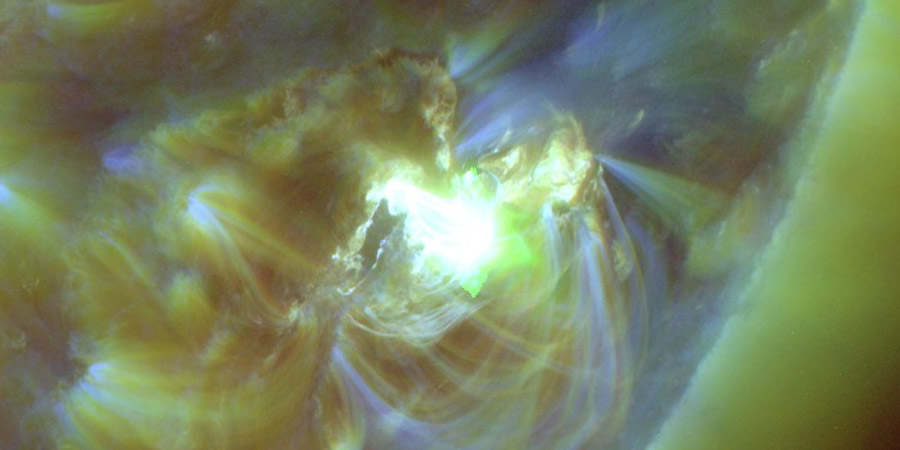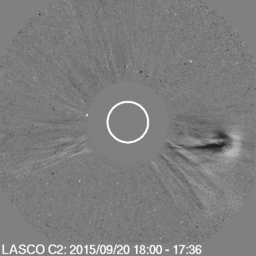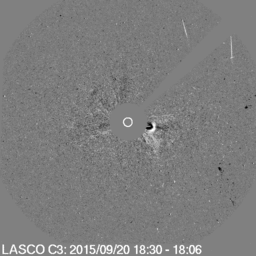M2.1 solar flare, glancing blow shock passage possible
Monday, 21 September 2015 13:35 UTC

Sunspot region 2415 produced an M2.1 solar flare (R1-minor) that peaked yesterday at 18:03 UTC. This solar flare was a long duration event and early imagery from SDO suggested right away that this solar flare was associated with a coronal wave and coronal dimming. Fancy words... yes we know... but these two solar features are classic signs that the solar flare launched a coronal mass ejection.
Moderately strong M2.18 solar #flare from #sunspot region 12415 - Follow live on http://t.co/XHATH0OOfT pic.twitter.com/UfSkG146Nn
— SpaceWeatherLive (@_SpaceWeather_) 20 september 2015
ALERT: Type II Radio Emission Begin Time: 2015 Sep 20 1817 UTC Estimated Velocity: 1358 km/s
SUMMARY: 10cm Radio Burst Begin Time: 2015 Sep 20 1754 UTC Maximum Time: 2015 Sep 20 1804 UTC End Time: 2015 Sep 20 1817 UTC Duration: 23 minutes Peak Flux: 320 sfu Latest Penticton Noon Flux: 110 sfu
SOHO coronagraph imagery showed us straight away that this solar flare launched an impressive coronal mass ejection but the bulk of this coronal mass ejection is heading well west and south of Earth as was to be expected due to sunspot region 2415 it's location near the west limb.


Animations: SOHO LASCO C2 and C3 imagery showing the CME of yesterday's M2.1 solar flare.
Updated coronagraph imagery from SOHO shows a very faint halo outline which is hard to spot but definitely there. The low energy protons and electrons as measured by EPAM also showed a distinct increase. Taking into account the speed of this coronal mass ejection at 1.250km/s (CACtus) to 875km/s (NOAA) we have to conclude that a shock passage will be possible either late on 22 September or early on 23 September.
Thank you for reading this article! Did you have any trouble with the technical terms used in this article? Our help section is the place to be where you can find in-depth articles, a FAQ and a list with common abbreviations. Still puzzled? Just post on our forum where we will help you the best we can!
Latest news
Latest forum messages
Support SpaceWeatherLive.com!
A lot of people come to SpaceWeatherLive to follow the Sun's activity or if there is aurora to be seen, but with more traffic comes higher server costs. Consider a donation if you enjoy SpaceWeatherLive so we can keep the website online!

Space weather facts
| Last X-flare | 2025/03/28 | X1.1 |
| Last M-flare | 2025/03/31 | M1.2 |
| Last geomagnetic storm | 2025/03/27 | Kp5 (G1) |
| Spotless days | |
|---|---|
| Last spotless day | 2022/06/08 |
| Monthly mean Sunspot Number | |
|---|---|
| February 2025 | 154.6 +17.6 |
| Last 30 days | 127.7 -23.5 |


